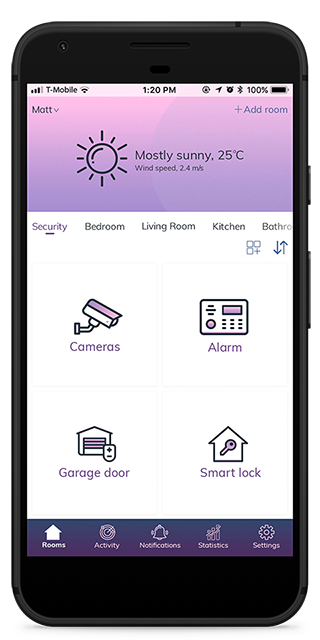
Home Remote Control System
An app that runs on multiple types of mobile devices and enables remote control for automated house systems.


Our team of expert Xamarin developers can help you transform your vision into reality. We provide end-to-end services, starting with the initial strategy, to design and development, testing, deployment, and maintenance.
Cross-platform mobile applications for iOS, Android, and Windows.
Integrating Xamarin apps with other systems and software, including back-end applications, cloud services, APIs, and third-party services.
Tailor-made solutions based on your specific business requirements.
Secure, scalable, and robust enterprise-grade apps that can handle large volumes of users and data.
Migrating or upgrading your existing mobile apps to Xamarin for better performance and cross-platform compatibility.
Expert advice on best practices and strategies for using Xamarin in your own business context.
Engaging and user-friendly interfaces for Xamarin apps that provide a consistent experience on all platforms.
Ongoing support and maintenance to ensure that the apps are up-to-date and continuously delivering a high-quality user experience.
Shared user interface code in C# with Xamarin.Forms, a UI toolkit that enables us to create native user interface layouts.

An app that runs on multiple types of mobile devices and enables remote control for automated house systems.

Mobile app that allows customers to purchase groceries from their mobile devices, without having to go to the physical store.
Our team consists of skilled software engineers, designers, and project managers with diverse expertise in various technologies and industries. This enables us to handle projects across domains, addressing your specific requirements effectively.
With our flexible partnership, you can easily scale your workforce based on your needs. Whether you need to expand or reduce resources, we provide rapid elasticity for optimal resource allocation and cost-effectiveness.
Embracing Agile principles, we adapt quickly to evolving project requirements, ensuring flexibility, enhanced product quality, and improved customer satisfaction. Through regular iterations and feedback loops, we align software solutions with your evolving business needs.
Our dedicated quality assurance team rigorously tests every aspect of your software to ensure optimal performance, security, and reliability. We adhere to industry-standard QA processes, guaranteeing stable and scalable software solutions.
Our meticulous handover process ensures a smooth ramp-up, facilitating efficient knowledge transfer within your project team. With clear communication channels and collaborative workflows, we align our efforts with your project goals from the start.
Experience seamless and transparent communication channels with us. We provide daily customer support through email, phone, and instant messaging. Our online system for issue reporting, bug tracking, and feature requesting ensures prompt feedback and swift resolution.
As an ISO 9001 and ISO 27001 certified company, we adhere to internationally recognized quality and information security standards, ensuring the delivery of reliable products and solutions.
Count on the stability of our services, even during team members’ absences. Our processes ensure continuous development and support, keeping your projects on track and maintaining momentum.
Banking apps, e-wallets, stock trading platforms, and other finance-related mobile apps
Patient management apps, appointment scheduling systems, telemedicine platforms
Cross-platform e-commerce apps for both Android and iOS devices
Apps that offer courses, interactive lessons, and educational resources for students
Cross-platform enterprise-level apps for tasks such as project management, CRM, and ERP
Apps that track fitness metrics, provide workout routines, diet plans
Apps for booking flights, hotels, or holiday packages, and also travel guides and maps
Ccab booking apps, delivery tracking
Customer-facing apps, offering features like loyalty rewards, store locators, and online catalogs
Apps for property listings, virtual tours, and location-based searches
Public service apps that aim to reach a broad user base across multiple mobile platforms
Streaming apps, music platforms, and other entertainment-oriented apps
Xamarin is a powerful and popular tool for building cross-platform mobile applications. Developed by Microsoft, which allows developers to use a single .NET-based codebase to build applications for Android, iOS, and Windows.
This is an excellent approach because it speeds up the development process, but also allows for a significant degree of code reuse, which reduces the potential for errors and ensures a consistent application behavior across different platforms.
Xamarin utilizes C# together with .NET framework, and it provides two ways for building your applications. You can use Xamarin.Forms to build a cross-platform UI using XAML, or you can use Xamarin.iOS and Xamarin.Android to customize your application’s UI for each platform.